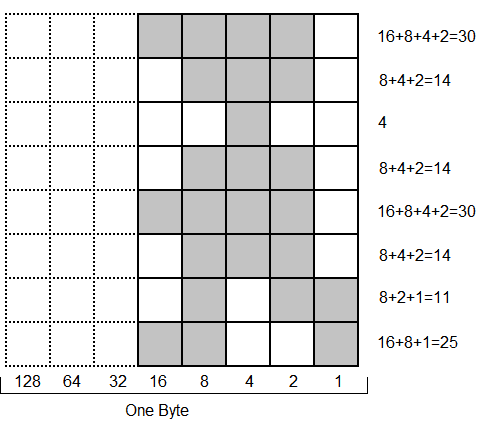- Improve the Ideas UX
- Learn about the Organiser Comms Link
- Software Index ‘I’m Feeling Lucky’ button
- Ship OpoLua 2.0 for iOS
- Write about MAME emulation
- OPL support for highlight.js
- Add manuals to psion.community
- Keyboard support for the LZ64
- Psion webring
- Software Index UID listing
- Software Index CLI for Linux
- Software Index spelunking
- PsiBoard documentation and write-up
- PsiBoard finishing touches
- PsiBoard charging status LED
- Ship Thoughts for EPOC32
- Minimal Psion USB-C cable
- Backups in Reconnect
- Organiser connectivity in Reconnect
- Write about RMRSoft preservation
- Ship OpoLua Qt
- Series 3a hinge reinforcement
- Archive Palmtop magazine scans
- Web-based Psion emulation
- Archive more Psion ROMs
- Add guides to psion.community
- Support attachments in Thoughts
- Thoughts for iOS
- Print feet for Anytime x Nixie
- Try out GlobalTalk
- Write up my read later strategy
- Time zone logger
- Little Luggable keyboard improvements
- Write up MiSTer x PVM
- Show filenames in Folders
- Support filtering in Folders
- Remove Libretto 50CT batteries
- Write about model-viewer
- Write about my 3D printed brackets
- Series 7 emulation
- Write up Nezumi
- Try out Plan9
December Adventure Day 21
Point and Click Adventures
Day 21 brought very little progress with my December Adventure. Instead, I took the time to finish playing ‘The Drifter’, an incredibly well executed modern point and click adventure. I strongly recommend it if you enjoy such things.

I reflected more on my December Adventure ‘progress’ and the slightly daunting list of ideas I have remaining. I think that, rather than starting new things, I’d like to wrap up some of the ideas I’ve worked on this month, and take a few days for more open-ended retro-related play and exploration. My partner would also like some help making a website for selling her art, so expect a few side-quests in that direction as well.
December Adventure Day 20
Taking Stock
Day 20 didn’t afford me much time to work on my December Adventure, so I thought it might be a good opportunity to take stock, and do a little housekeeping.
Ideas
Since I’m two-thirds of the way through the month, I wanted to see which of my initial ideas remain. In the last 20 days, I’ve taken a crack at:
I also distracted myself into a few bits of 3D design and printing that weren’t on the list:
I even started to create a Psion-focused launcher for MAME.
This leaves me with:
(It’s good know that I’m not going to run out any time soon.)
While the fairly random nature of the Organiser II lucky dip I’ve relied on for much of my adventuring has been enjoyable, that’s a fairly long list and I’d like to be a little more deliberate in the coming days—I don’t anticipate quite so much spare time as we move into the holidays themselves and I’d like to make it count. This list will serve as inspiration, but I’ll be more directed in what I choose.
That said, I’m also going to add one more thing to the list: I had a really fun conversation with Tomsci about how we approach EPOC16 support in OpoLua, during which we decided to look into auto-generating EPOC32-era Psion install (SIS) files for use on EPOC16 devices. We aim to do this as part of the Psion Software Index indexing process, meaning that these new installers will be available for anyone to use, in OpoLua, Reconnect, or other tooling. I’d love to start planning this out.
Gridify
During the process of documenting my Organiser II icon designs, I found myself writing a little Python script (which I’ve dubbed gridify) to enlarge pixel art images and add grid lines. The script is tiny but, in the interests of sharing, I’ve uploaded it to Codeberg and assigned an MIT license.
Gridify lets you generate previews like this:

Thinking more about the announced GitHub pricing changes for self-hosted Actions runners, I wonder if a tiny project like this might be a perfect excuse to try out CI alternatives. While GitHub have flip-flopped on this, announcing that they’re delaying the planned per-minute metered pricing for using self-hosted runners, the writing’s on the wall, and I need to find an approach that’s more sustainable.
December Adventure Day 19
Organiser Icons
I woke up on day 19 of my December Adventure feeling that I’ve not used my Psions nearly enough in the past week: while I’ve been doing many Psion adjacent things with OpoLua and PsiEmu, I’ve not taken the time to sit down and tinker with the devices that inspire my adventuring and serve as enjoyably disconnected tools. With that in mind, I decided to tackle the first item in the Organiser II lucky dip and, ‘improve the Ideas UX’.

Ever since reading about the Organiser II’s OPL support for user-defined characters, I’ve been keen to try it out and replicate the classic menu screen that the built-in programs provide.

Organiser II LZ home and app menus are a scrollable grid of options with a title bar containing an icon and clock
Organiser II icons are 5px by 8px, and loaded as a sequence of 8 bytes using the UDG command. For example, the following character is written to user-defined character 1 with UDG 1,30,14,4,14,30,14,11,25.

There’s one additional constraint when creating icons for the title bar: the bottom two-rows of pixels are taken up with the underline, meaning that the icons themselves can only be 5px by 6px.
Armed with this information, I spent an enjoyable analog hour-or-so experimenting with icons:

Given the restrictions, I’m pretty pleased with what I came up with. I’m particularly fond of the following ones:

The lightbulb—an early design—remains my favorite for the ideas app, so I set about writing the top-level menu picker. Thankfully, as with OPL on later Psions, there’s a lot of conveniences for producing standard UI and it’s easy to replicate the menu screen with a combination of UDG, CLOCK, and MENUN:
menu::
CLS
UDG 0,14,17,21,14,10,4,0,31
UDG 2,0,0,0,0,0,0,0,31
PRINT CHR$(0);REPT$(CHR$(2),14)
CLOCK(1)
m%=MENUN(2,"New,View,Random")
IF m%=0
GOTO quit::
ELSEIF m%=1
GOTO new::
ELSEIF m%=2
GOTO show::
ELSE m%=3
GOTO rand::
ENDIF
In the process of updating the program, I kept hitting up against an out of memory error on my Organiser II. It turns out the internal drive is drive ‘A’ and not drive ‘C’ as one might expect of DOS and Windows era computers—I’ve been happily writing to (and filling up) my write-once 64k datapak for the past couple of weeks. Time to get a datapak formatter. 🤦

While the ordering of menu items could be better, I’m pretty pleased with the outcome. 💡

Enjoying Colin’s Advent of Beeb while designing Organiser II icons—heaven!